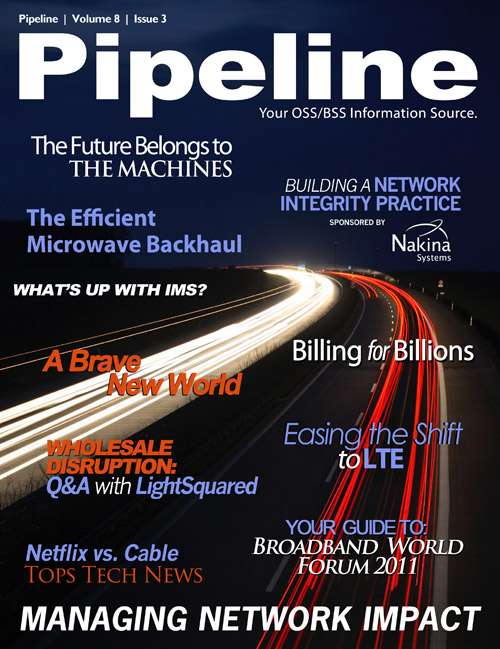However, no consumer provider that I’ve seen has attacked the issue of M2M quite like Sprint has.
It’s a natural outgrowth for the company, as its business model is already more closely aligned to the
enterprise than the consumer space, so enabling enterprise-level M2M management makes a lot of
sense for the company.
“If you think about where M2M started for a number of companies and enterprises, it started with fleet
and telematics,” said Tom Nelson, Group Manager for Emerging Solutions at Sprint Nextel. “If you
think of that as one of the early entrees for machine-to-machine, from there we have seen, especially within the last few years, explosive growth in the space.” That growth has been the impetus for Sprint’s
creation of its Emerging Solutions group, the focus of which is to put, as Nelson said, “critical mass and
focus of resources behind machine-to-machine.”
Whereas the traditional wireless space focuses on the latest and greatest handset to hit the market,
things are different on the machine side. “M2M has a different complexion, “said Nelson, “from the
kinds of devices to the different enterprise and developer needs.”
One particularly interesting issue is providing a network for customers that can’t tell you how their
experience is or whether there’s a problem with their connection.
“What’s unique, from a care and support perspective, is when we had a handset we could just call them
or send a text and say ‘how are things going?’” said Nelson. “Now you’ve got these devices that you
need to be able to effectively manage and communicate back and forth with the device, knowing that
there may not be a human that we’re talking with.”
“We’ve got to find ways to help our customers manage what could be anywhere from thousands
to millions of units,” said Chris Ferguson, also with the Emerging Solutions group and tasked with
identifying and building the tools that help customers make the most of their M2M solutions. “They
certainly don’t want to have to pick up a phone and call Sprint every time they need some action taken
on those units.”
To enable higher levels of self-service, the team launched the Sprint Command Center. It allows
customers to have a wide variety of controls over their devices and their services. “They have the
capability to activate their devices, and we have several states they can put their devices in,” said
Ferguson. “If you think about something like connected transportation, I may be embedding a module
in a car that’s in a manufacturing line, but I want to make sure that module is up and working.”
“We can keep that in a provisioned state so that when it rolls of the line and is at a dealership, the
dealer can actually demo that capability to the customer,” Ferguson continued. “We really don’t have
an end-user yet, so we’re not billing for that usage yet, but I can keep that module up so that I can
manage it so that I can make that happen for the customer. The ability to have that connection to that
network before the device is in the end-users’ hands is really important to our customers.”
However, this level of control possibility doesn’t mean that enterprises are forced to micromanage.
“They can either manage those devices in bulk, or if they’re a very large customer, they can even use
APIs,” said Ferguson. “They certainly don’t want to sit at a portal and manage those devices one by
one.”




